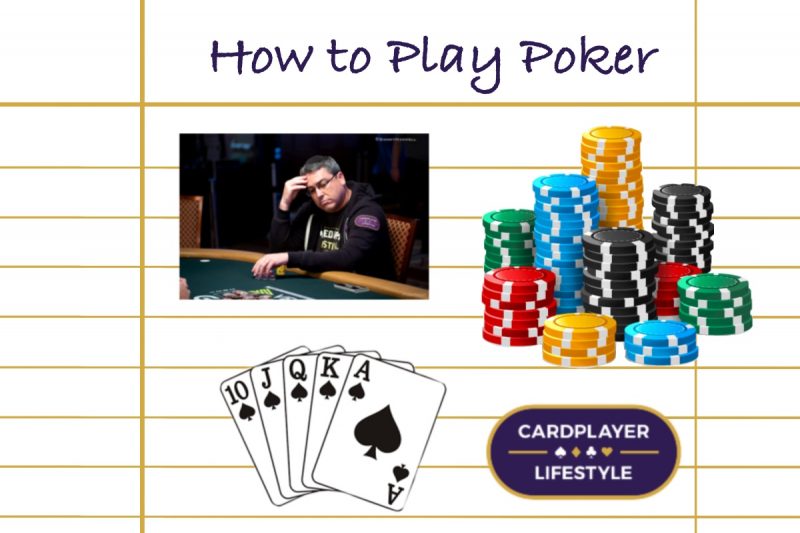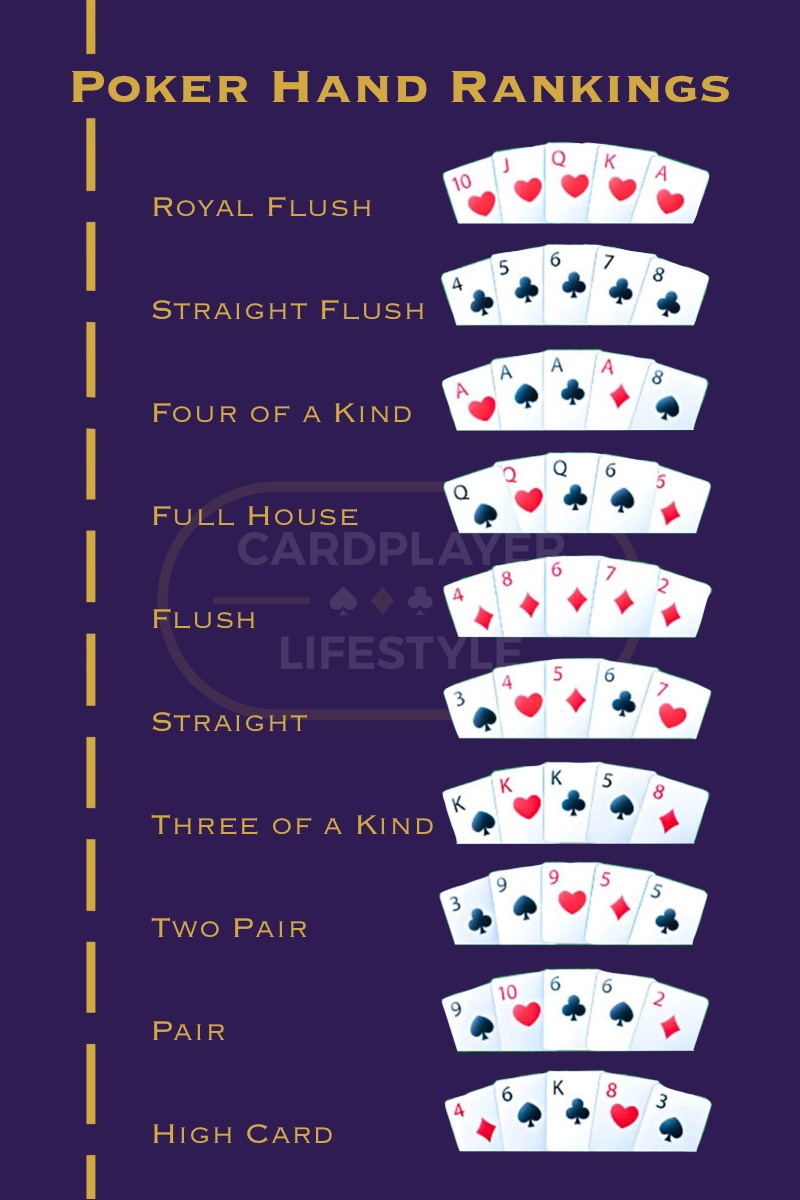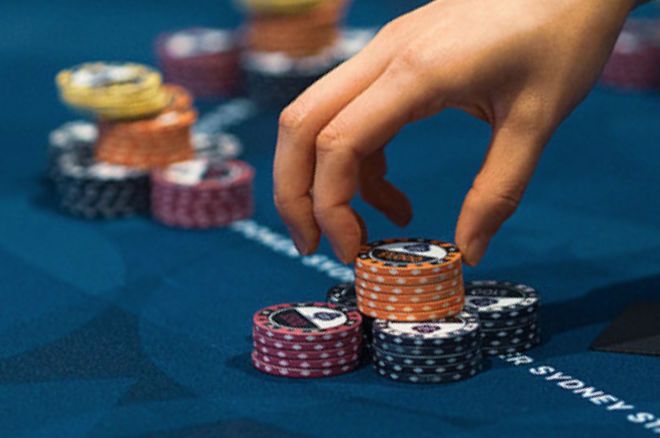How To Play Poker – A Guide to Basic Poker Rules
What is Poker?
How to play poker is the first and most obvious subject you speak about with beginners being exposed to the game for the first time. Poker is a popular card game in which players make monetary bets that their hand is a higher ranking than their opponents’. A hand is won by either having the highest-ranking hand or by all remaining players “folding” or forfeiting their hand. Poker is played with one standard 52-card deck and either poker chips or cash that is used to make wagers, or bets.
The origins of poker can be traced back to either the French game Poque or the Persian game As-Nas, but these games had very different structures than the rules of poker we know today. The earliest version of poker as we now know it started in early 19th century Mississippi and New Orleans as riverboat casinos regularly hosted poker games. This helped spread the game, as new gamblers found their way on these riverboat casinos and learned how to play poker. The game has seen many variations since the early days in the United States, and with these variations, the basic rules of poker have changed. One thing which has remained constant, however, is the hand rankings.

Basic Rules of Poker: Hand Rankings
The goal of poker is to make the best possible five-card hand. Based on the poker rules for the game you are playing, you will have a different number of cards to use to make your hand. The original game played in the American South was 5-card draw, where players received five cards face down that only they can see and use.
The next popular form was 7-card stud, where each player receives three face-down cards and four face-up cards, all of which can only be used by the player. Today’s most popular game, Texas Hold’em, gives each player two face-down cards and five “community cards” that are face up and can be used by any player at the table. No matter how many cards you have, the community has, or whether they are face-up or face-down, the aim is to make the best five-card hand.
Before we get into the hand rankings and some more basic rules of poker, let’s break down what is in a 52-card deck. The standard deck of playing cards consists of four suits. The suits are clubs, diamonds, hearts, and spades. Each suit has 13 cards, 2-10, a Jack, Queen, King, and Ace. The cards are ranked from lowest to highest: 2, 3, 4, 5, 6, 7, 8, 9, 10, J, Q, K, A. While there may be some slight variations depending on the poker rules for your chosen game, these hand rankings usually do not change. Now, for the five-card hand rankings:

Once you know “what beats what”, i.e., the order of hand rankings, you’ll understand a main component of how to play basic poker.
- The highest possible hand to make is a Royal Flush. A royal flush, or “royal”, is 10-J-Q-K-A of the same suit.
- A Straight Flush is any five cards in a row of the same suit, other than the royal flush (e.g., 3-4-5-6-7 all clubs, or a “7-high straight flush”). Straight flushes are ranked based on the highest card in the progression, so a K-high straight flush beats a 9-high straight flush.
- Four of a Kind is when you have four cards with the same face value (e.g., 5-5-5-5-K, or “quad 5s”).
- A Full House or “boat” is when you have three of the same value and two of another, (e.g., 7-7-7-9-9 or “7s full of 9s”). Full houses are ranked based on the higher three of a kind (A-A-A-2-2 beats K-K-K-J-J).
- A Flush is when you have five cards of the same suit that do not make a straight flush. (e.g., K-J-10-9-4 all spades, or “King high flush”).
- A Straight is any five cards in a row regardless of suit (e.g., 7-8-9-10-J, or “Jack high straight”). One note about straights: in all other cases the Ace is the highest card in the deck, but you can use it as a “1” to make a low straight known as “the wheel” (A-2-3-4-5). The highest possible straight, 10-J-Q-K-A, is also referred to as “Broadway”.
- Three of a Kind is when you have three cards with the same value (e.g., 8-8-8-A-J). If both players have the same three of a kind, the hand is won by the higher remaining two cards, or “kickers” (e.g., 8-8-8-A-9 beats 8-8-8-J-9).
- Two Pair is when you have two different combinations of two cards of the same value (e.g., A-A-J-J-5). Two pairs are ranked based on the highest pair, so A-A-2-2-K is better than K-K-Q-Q-9.
- A Pair is simply having two cards of matching value, and it is ranked based on the higher value of the pairs (e.g., K-K-7-4-2). Kickers also decide the outcome if two players have the same pair.
- Finally, the lowest hand is a High Card and is ranked by the highest single card in the hand (e.g., A-J-8-7-3 beats K-J-8-7-3).
Rules of Basic Poker: Game Structure
As discussed earlier, there are many forms of poker. The three main game structures are flop games (where there are community cards), stud games (no community cards but some cards are face-up), and draw games (no community cards, all cards face-down). These are the three families that determine the basic rules of poker.
In terms of how to play basic poker, games can either be played as limit or no-limit. Limit games have rules to the amount you can bet at any time. No-limit means at any time you can wager all the chips or money you have in play, but these games are “table stakes” meaning you can only wager what you have on the table at the beginning of the hand. All stud games are limit games, and most draw games are as well. Flop games can be played as either, but the most popular variety, No-Limit Texas Hold’em, is clearly a no-limit game.
There is a third type of game: pot-limit, meaning the maximum bet or raise at any time is the size of the pot. This is most common in flop games, mainly Pot-Limit Omaha. While the rules of basic poker vary between game types, there are many shared poker rules.
Rules of Basic Poker: Blind Bets and Antes
As per the rules of basic poker, all games start with the “blinds” or the “antes” being posted. Blinds and antes are both known as blind bets, meaning you must wager them before you receive your cards. Stud games are played with an ante, so all players who are involved in the hand must wager a set amount before any cards are dealt. Flop games use blind bets, where the two players to the left of the dealer must put out the “small” and “big” blinds. The most popular form of poker, No-Limit Texas Hold’em, is listed at the casino based on their blind amounts.

So if you go to your local card room and see $1/$2 No-Limit Texas Hold’em listed, those are the small and big blinds. The small blind is to the immediate left of the dealer and the big blind is to their left. Draw games use either the blind system or the ante system depending on the variation. You can use both antes and blinds, which is typical in poker tournaments. Once the blind bets have been posted, the hand continues with the cards being dealt one at a time to each player beginning to the immediate left of the dealer. So in a game with blinds, the small blind receives one card, then the big blind, and so on until all players have received the necessary number of cards.
Rules of Basic Poker: First Betting Round
The first round of betting happens right after you receive your cards. In Texas Hold’em, or any other game using blinds, the first person to make an action is to the immediate left of the big blind. This position is known as “under the gun” and they can either “call”, “raise” or “fold”. Calling is when you match the bet, so in this case, you would call the big blind amount. Raising is when you increase the bet to at least double the previous. In a $1/$2 blind game, you can raise to $4+. Finally, folding is when you return your cards to the dealer and forfeit your hand. This ends the hand for you, so you cannot win any money in the pot. It is important to adhere to the basic rules of poker and act in turn, so if you are not under the gun and the player to your left hasn’t made an action yet, don’t take any action yourself.
Limit Stud games start differently, both in how the cards are dealt and by who acts first. In a game of 7-card stud, each player received two face-down cards and one face-up card. The player with the lowest face-up card is forced to bet, usually half of the small bet. So, in a $10-$20 limit stud game, the lowest face-up card will be forced to bet $5, and the rest of the players can call, fold, or raise to $10. This forced bet is known as the “bring-in” since you are bringing in the action. In a game of 5-card draw, each player received five cards face-down, and then have their first round of betting.
For all games, the round of betting concludes when the highest bet has been called by the remaining players or everyone folds except for one. If all players except one fold, the hand concludes and the last remaining player wins the pot.

Rules of Basic Poker: Second Betting Round
After the first round of betting more cards are dealt, and there is a second round of betting. For all games, before any players receive more cards one card is placed face-down in the middle of the table. This is known as a “burn card”. The term “burn and turn” is widely used in Texas Hold’em to signify you are moving on to the next round, as you burn a card, then you turn more cards over. Also, in the second round of betting, there are no forced or blind bets.
In Texas Hold’em, the first three community cards are dealt after the burn. This is known as the “flop”. The action begins on the player to the left of the dealer. They have the option to “check” or bet. Checking is choosing not to bet, and the action moves to the next player. In stud, each player receives one more face-up card and the action begins on the player who has the highest hand using their two face-up cards. All subsequent betting rounds in stud will begin with the player who has the highest face-up hand. This player can check or bet.
Draw games work differently. In 5-card draw, after the first betting round each player can choose up to three cards they want to “discard” or replace. The number of cards you can discard may vary depending on the poker rules of the variation being played. Players discard their cards in the same order they bet. Once all discards have been declared, the dealer burns a card and deals new cards to the players, one player at a time, so if the first player discards three, they get all three new cards before the next player receives any.
Once all new cards have been dealt, there is another betting round. If you are playing 5-card draw, the hand is now over, and players are at “showdown” meaning everyone shows their hand and the highest hand wins the pot. Stud and Hold’em players have more rounds of betting.
Rules of Basic Poker: Third Betting Round
In Hold’em, the next round begins after one card is burned and one more community card is dealt face-up (“the turn”). In stud, one card is burned, and each player receives one more face-up card. In stud, this round (also known as “fifth street”) is important since the size of the bets increases. For stud games, the first and second rounds of betting use the smaller limit, the third and subsequent rounds use the larger limit. So, in a $10-$20 game, the first two rounds of betting are in increments of $10 (one player bets $10, the next can raise to $20, the next raises to $30, and so on). Once you are on the third betting round, betting is in increments of $20. The only bets that are not $10 or $20 are the ante (typically $1 for this size game) and the bring-in (typically $5 for this size). Once this round concludes, we move on to the next round.

Rules of Basic Poker: Fourth and Fifth Betting Rounds
In Hold’em, one more card is burned and the final community card (“the river”) is dealt. This is the final round of betting. Once this round concludes, the players are at “showdown” and players show based on who took the last aggressive action on the river betting round. If no bets were made, the first player in the order must show. If a player before you shows a better hand, you are not obligated to expose your cards; simply return them face-down to the dealer. If you are unsure who has the best hand, always show your cards so the dealer can declare a winner.
In stud, each player receives one more face-up card and there is another round of betting. There is one more round in stud where each player receives their final card face-down. After these two betting rounds, the players show their face-down cards in the same order as Hold’em (last bettor, or first to act if no bets were made). Although you have seven cards in stud, you can only use five to make your hand.
How to Play Poker: Gameplay Recap
Here is a brief recap of the betting rounds for each game type:
How to Play Poker: Flop Poker Game Variations
Blinds are posted and players receive two face-down cards (or “hole cards”), dealt one at a time starting to the left of the dealer. Once all players have their cards, the first round of betting (a.k.a., “preflop”) occurs.
One card is burned, and three community cards are dealt face-up (“the flop”). Another round of betting occurs.
One card is burned, and one more community card is dealt face-up (“the turn”). Another round of betting occurs.
One card is burned, and the final community card (“the river”) is dealt face-up. The final betting round occurs, and players show their hands. The best 5 card hand using any combination of hole cards and community cards (or “the board”) wins the pot.
READ MORE: Check out our complete Flop Games Guide
How to Play Poker: Stud Poker Variations
All players post their ante and starting to the left of the dealer, each player receives two face-down cards and one face-up dealt one at a time. The lowest face-up card posts the bring-in bet, and the round of betting occurs.
One card is burned, and each remaining player receives one face-up card. A round of betting occurs. This is repeated two more times until each player has two face-down cards and four face-up cards.
The final card is dealt face down, there is the final betting round, and players show their hands.
In Stud, the betting rounds are named first, second, third, fourth, and fifth street.
READ MORE: Check out our complete Stud Games Guide
How to Play Poker: Draw Poker Variations
Blinds or antes (or both) are posted, and each player received five face-down cards. A round of betting occurs and each player declares the number of cards they wish to discard.
One card is burned, and each player receives their new cards (all players must have five total cards) dealt one player at a time. There is another betting round, then players show their cards.
READ MORE: Check out our complete Draw Games Guide
How To Play Poker and Win
Poker is a strategy game. While luck is involved, your strategic approach to the game will be the deciding factor for your results in the long run. There are three key factors to a beginner’s poker strategy: patience, position, and aggression. If you utilize these three factors, you are on your way to formulating a winning strategy.
General Poker Tips: Patience, Position, and Aggression
Patience is key in any form of poker, as your starting hand selection is incredibly important. No matter the game, you should be folding most of your hands during the first round of betting. In Texas Hold’em, for example, most professionals will tell you to fold around 80% of your starting hands.
You can find many starting hand ranges online, and see what hole cards you should be opening, or raising first preflop. The same goes for other forms of poker, although the starting hand ranges are harder to define since you have more hole cards, so it will be hard to find a preflop chart for stud or draw games. Either way, you should be reserving your chips for premium starting hands.
Hand selection coincides with your position in the hand. It is best to be acting last in games that utilize a dealer button, as you will see the other players make a decision before you have to. So, you can play more hands when on the button and you should play fewer hands when in the blinds or under the gun.
Under the gun in Hold’em is your tightest range, mostly reserved for pairs 6s+ and big As and Ks like AJ or KQ. When you play more often in later positions, you can start picking up on player tendencies by seeing what they do, and you will learn to use that information to your advantage.
Finally, aggression is very important in poker. While making strong hands is a great way to win, you can also win lots of pots by getting players to fold. If you are selective in your starting hands, you have the advantage over most casual players. If you are betting infrequently and checking often, you are losing some of that advantage. Keep in mind, however, that blind aggression is bad; i.e., you don’t want to always be betting no matter what. Use the information at your disposal to pick calculated times to bet.
When you have a strong hand, it is good to bet as you want to build a pot to win. When you do not have a strong hand, look for information that allows you to steal the pot with a bet. Is your opponent checking often and folding when bet to? If so, you can bet more often to get them to fold. If you are playing stud and your hole cards are AJ of hearts, but your up cards are 6-7-8-10 of spades, that is a great time to take aggressive action and represent a straight or a flush. Poker strategy is based on information, so use what you have to make the best decisions and be carefully selective with your starting hands.

How to Play Poker: Protect Your Cards
The most important rule of poker is to protect your hole cards. Information is your most powerful tool in poker, so don’t give away your hand by picking the cards up off the table. While it is unlikely you will come across someone actively trying to sneak a peek at your hole cards if you aren’t careful, you may be broadcasting your holdings to those around you.
When looking at your cards use one hand to cup the area around the top of the cards and the other to bend the tops of the cards up just enough to see the values and suits. Though it’s not a basic rule of poker, best practice for players dictates that after you have seen your hole cards, you should place one poker chip on top of your cards. If you have a chip on top of your cards, the dealer will never accidentally fold them. It is unlikely they will be folded even if you don’t have a chip on them, but accidents happen so always be sure to protect your hand.
How to Bet
Poker is almost always played with chips instead of cash. Your chips should be stacked near the edge of the table in front of you in stacks of 20. This number (20) is common as you will likely have red $5 chips, so a stack of 20 is $100. It is important to keep them near the edge of the table, as there is usually a betting line in front of you, and you don’t want your chips over that line unless you plan to wager them.

When it is your turn to bet, place the number of chips you wish to bet over the betting line. It is important to place all the chips you want to bet over the line at once. If you try to put out part of a bet and then add more chips, that is known as a “string bet” and is not allowed.
Another poker rule to know is verbal bets are binding. If you say “$100” and put $80 over the line, you must add the missing $20. This next rule confuses many players, but it’s known as the “one chip call” rule. If a player bets $10 and you place one green $25 chip over the line, that is considered a call. If you want to raise the previous bet using one higher denomination chip, you must announce “raise” before you do so. Anytime you throw one chip over the line, no matter the denomination, it is considered a call.
Lastly, place your chips over the betting line but don’t throw your chips into the pot. This is known as “splashing the pot” and is frowned upon since it is hard to count your chips and makes things confusing if another player raises you.
How to Win In Poker Games
Any chess player will tell you that knowing how the pieces move doesn’t mean you know how to play chess. Poker is similar. Knowing the rules of basic poker is just the first step. You also have to have a broad understanding of math (to calculate pot odds, for example) as well as how to read opponents, and more.
Luckily, there are many resources out there to get better. You can watch others play poker on YouTube vlogs to learn a basic strategy or join one of the many online poker training sites. However, you choose to get better, knowing the basic poker rules is step one. With this comprehensive guide, all you need is a deck of cards and some chips to start your poker journey.


